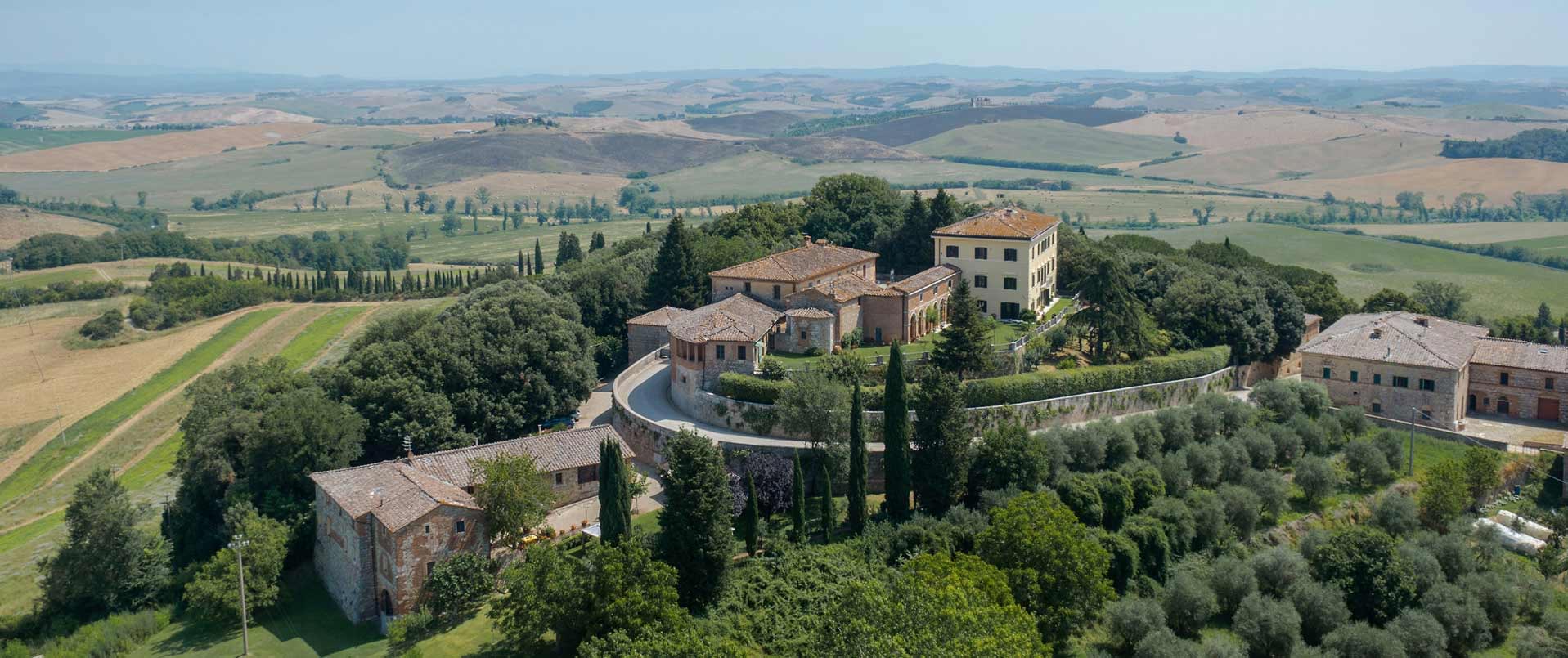
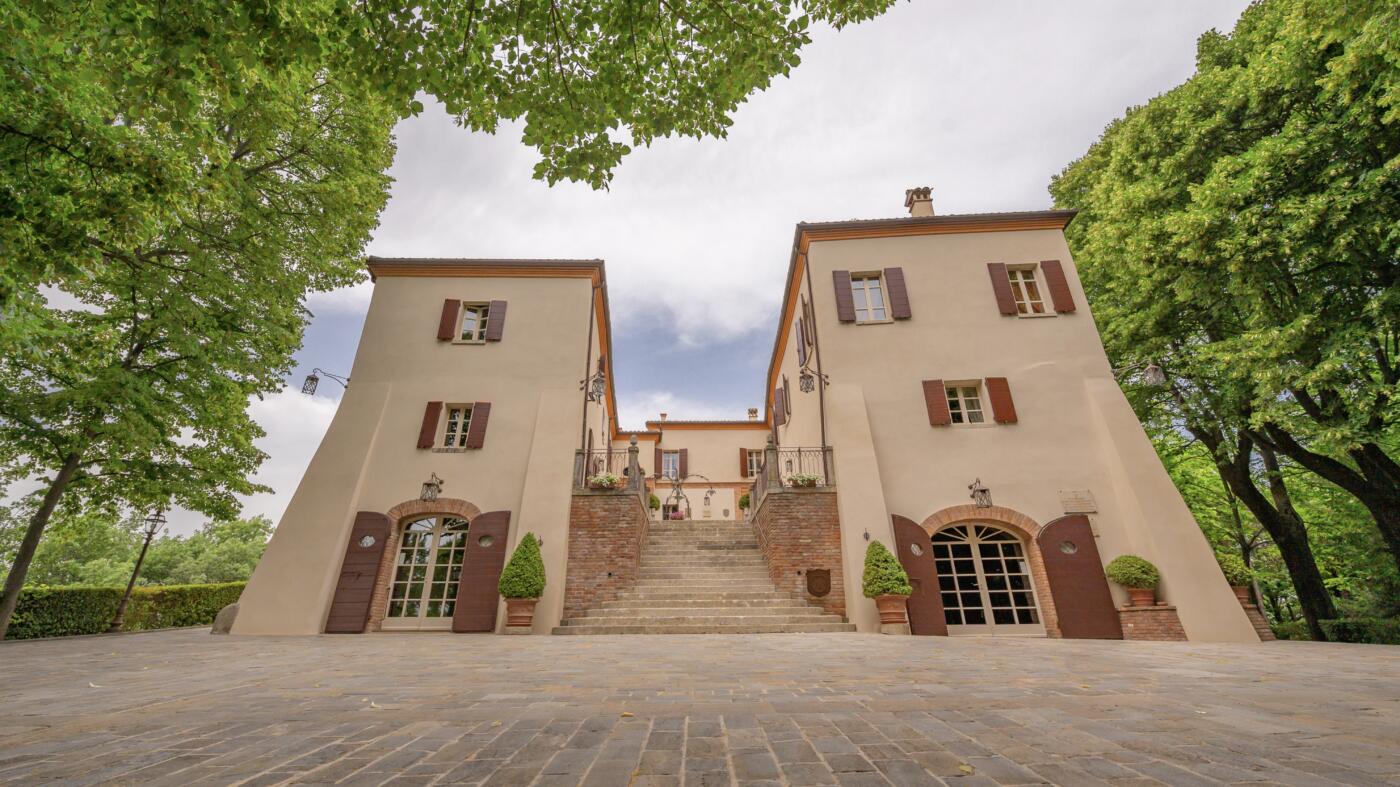
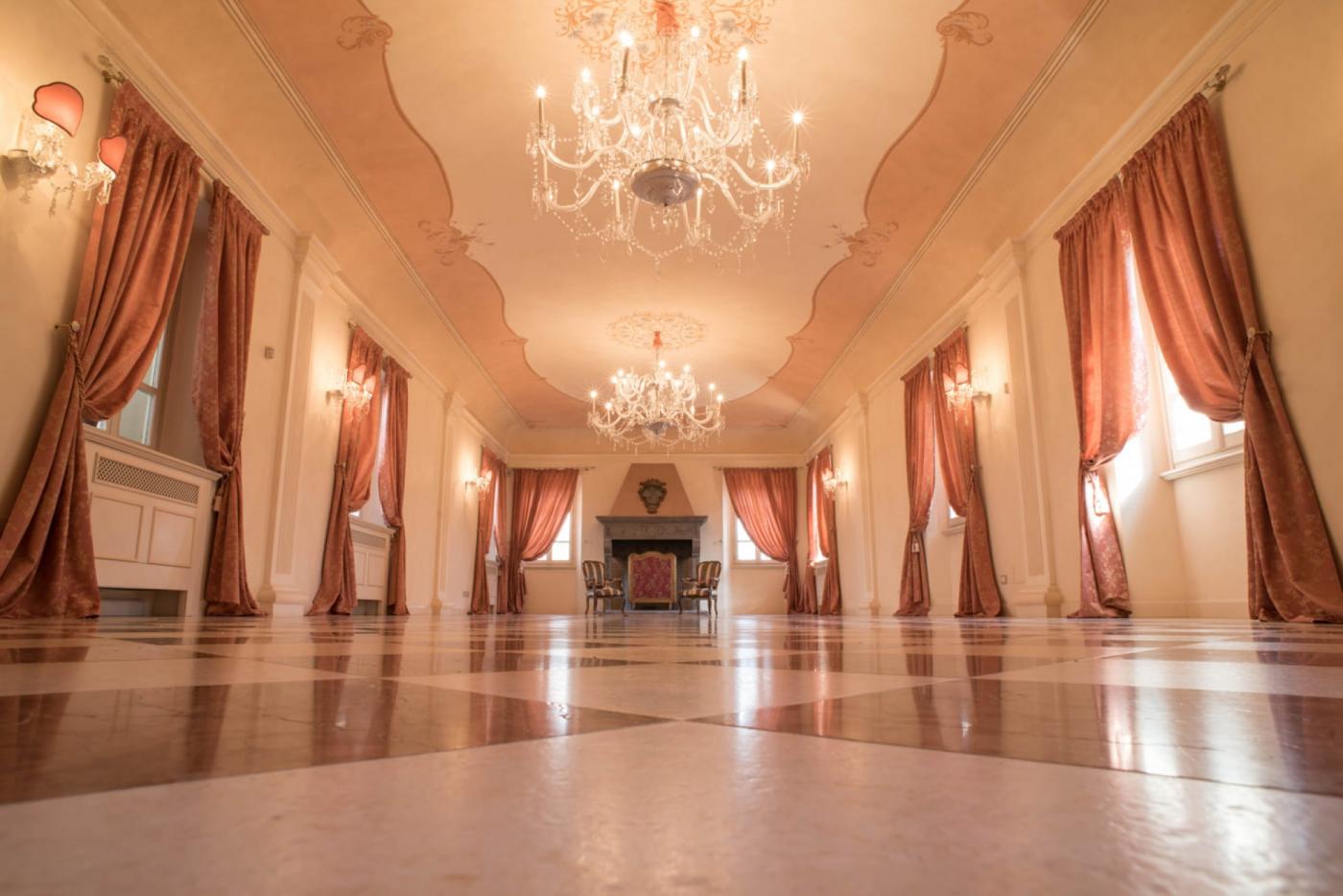
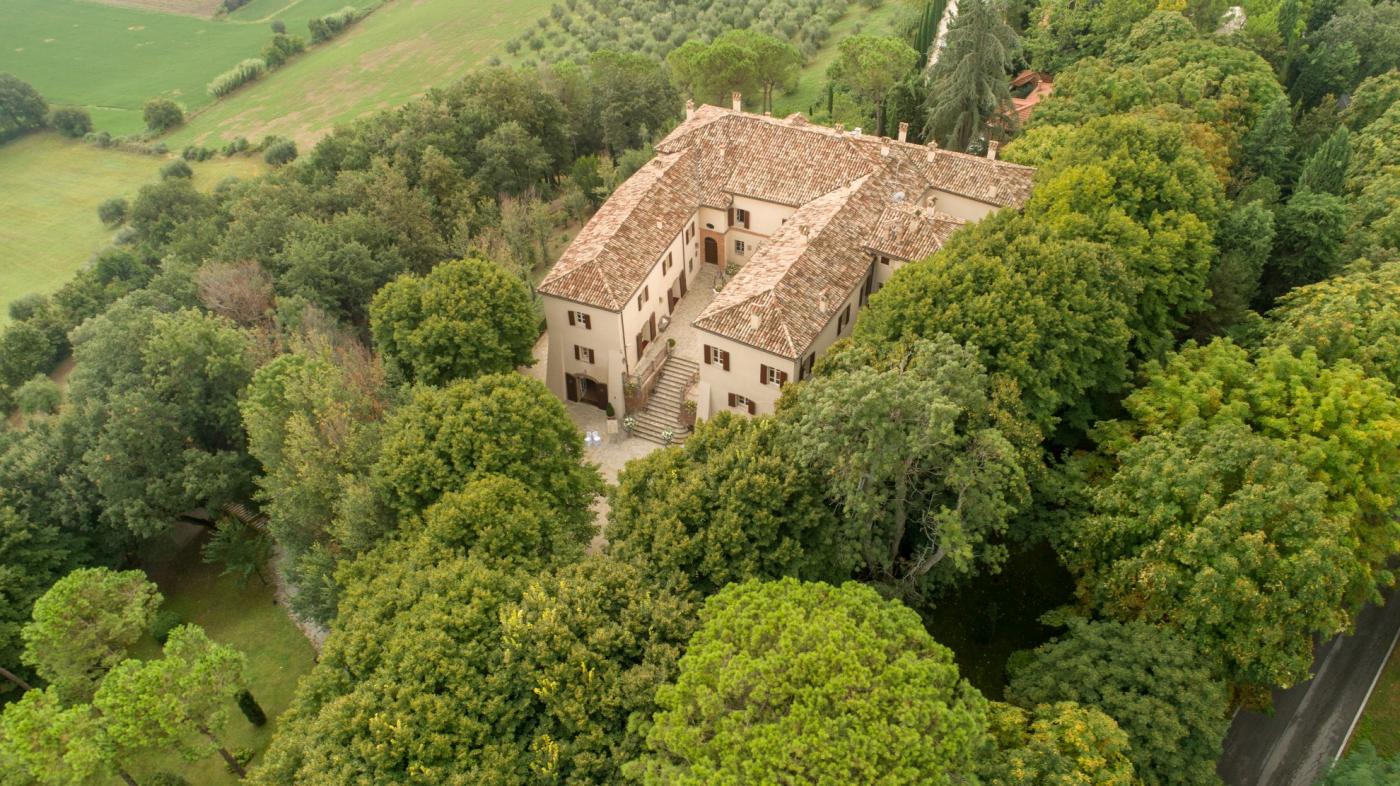
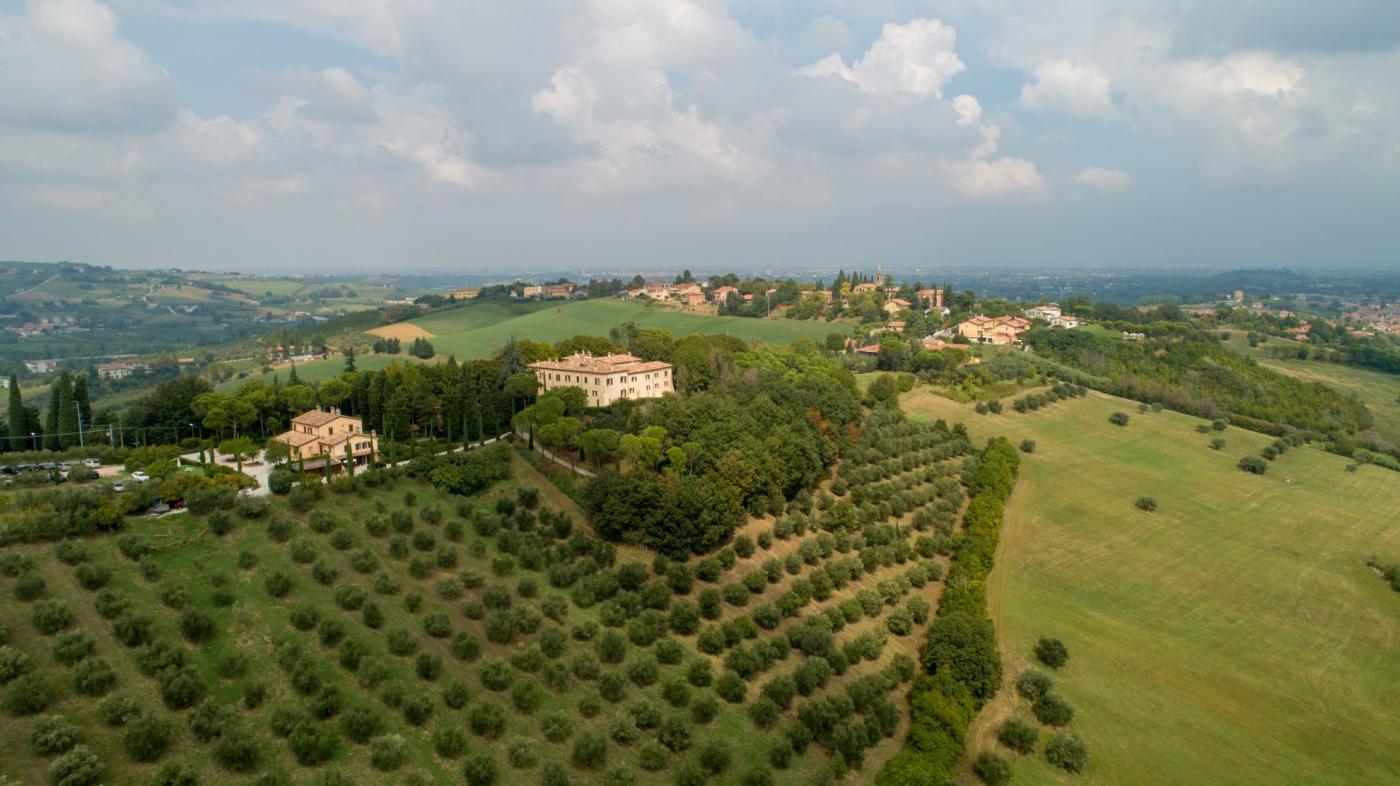
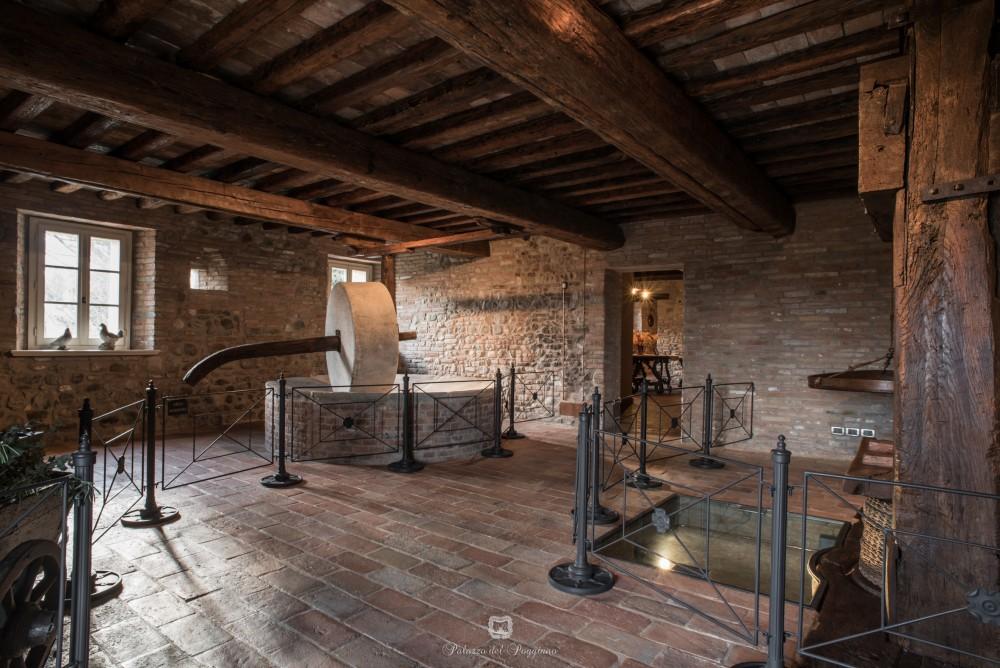
CIN Code: IT099028B4I8FRMJ7P (codice riferito a struttura annessa alla dimora)
The History of Palazzo del Poggiano dates back to the first half of the 14th century. The first notarial sources documenting the existence of the Tumba Pozani (the term “tumba” referred to elevated places comprising both a fortified building complex and the surrounding territory over which the fortress exercised its jurisdiction, essentially identifying itself with a small fief) located in the hilly inland area of Rimini, owned by the Malatesta family, to whom it remained, albeit alternating with many other owners, throughout the 15th century. The fortified palace and the annexed lands, which represented a genuine resource, were in fact a coveted domain by important dynasties, both local and not. However, the existence of a mill located in Pozano is documented as early as the mid-13th century, even before the settlement became an integral part of the Malatesta fiefdom. The Malatesta were succeeded, among others, by the Bentivoglio, the Montefeltro, the Nardini, the Della Rovere, the Doria, the Gonzaga, the Medici, up to recent centuries with the Tosi family (19th century), an important local family whose name identified the building for a long time. The Second World War was followed by years of degradation and abandonment until the recent restoration (2000 – 2008), initiated by the current owners in collaboration with the Superintendent of Archaeology, Fine Arts and Landscape. From a Malatesta hunting lodge, to which the fortress-like characteristics still observable today are attributed (compact walls, small openings, and absence of decorative elements), the Palazzo underwent gradual growth and modifications over a long period, up to the 19th century, when the architectural structure revealed its vocation as a “palace,” becoming a rural holiday residence. Even today, one can admire an oil press adjacent to the restored ancient kitchens of the palace, a testimony to a centuries-old oil-making tradition. Significant were the modifications and expansions that took place over the centuries: for example, the small frescoed church adjacent to the complex (19th century), or the evocative 17th-century staircase leading to the courtyard, from which the entrances to the “Noble” floor of the palace open. The furnishings and decorations that characterize this latter space date back to the time of the Tosi family’s possession (1834-1940). A large, variably shaped park surrounds the palace and serves as its natural complement, with trees that are centuries old, such as the beautiful avenue of linden trees leading to its entrance.
On the edge of the same park that surrounds Palazzo del Poggiano is “Poggianino”, the estate’s old farmhouse, restored and refurbished in keeping with tradition and dedicated to bed and breakfast hospitality. Inside there are three delightful suites with a country soul, where attention has been paid to the smallest details, to make every stay truly confortable and memorable. Ideal for a relaxing holiday in the countryside and for discovering the beautiful Marecchia Valley.
 Accommodation
Accommodation
 Co-Working
Co-Working
 Film sets
Film sets
 Gardens
Gardens
 Parks
Parks
 Private events
Private events
 Residences
Residences
 Weddings
Weddings
 Cultural tourism
Cultural tourism  Cyclotourism
Cyclotourism  Gardens
Gardens  Hiking
Hiking  Historic Homes open to visitors
Historic Homes open to visitors  Walking itineraries
Walking itineraries Nessun appartamento configurato per questa dimora o la visualizzazione degli appartamenti non è attiva.